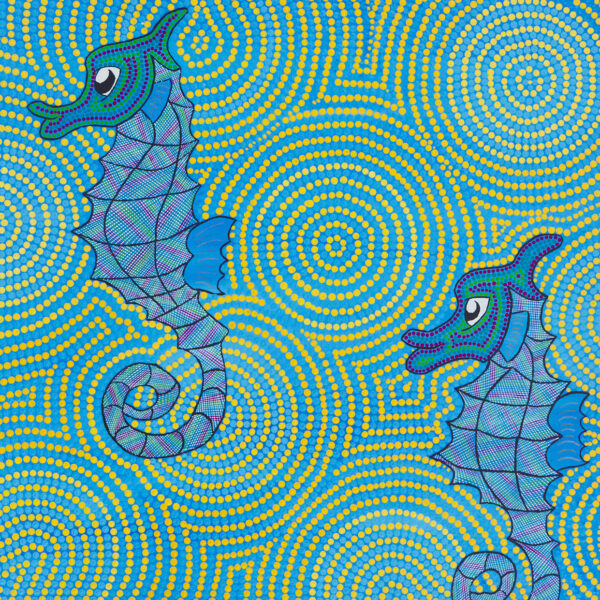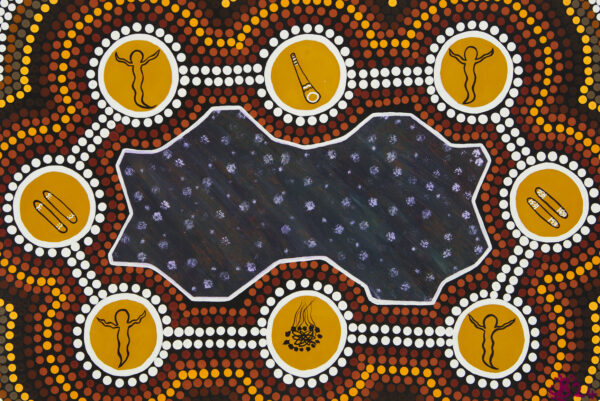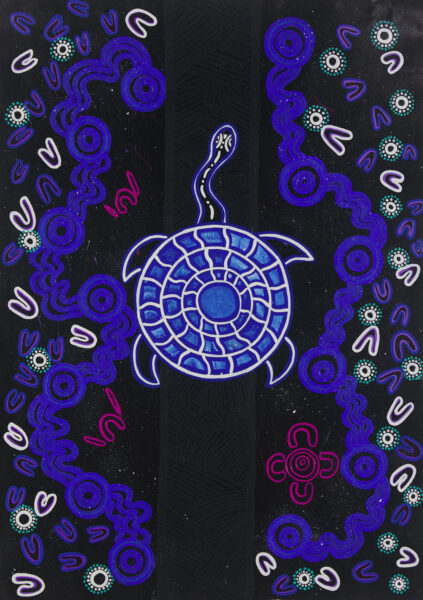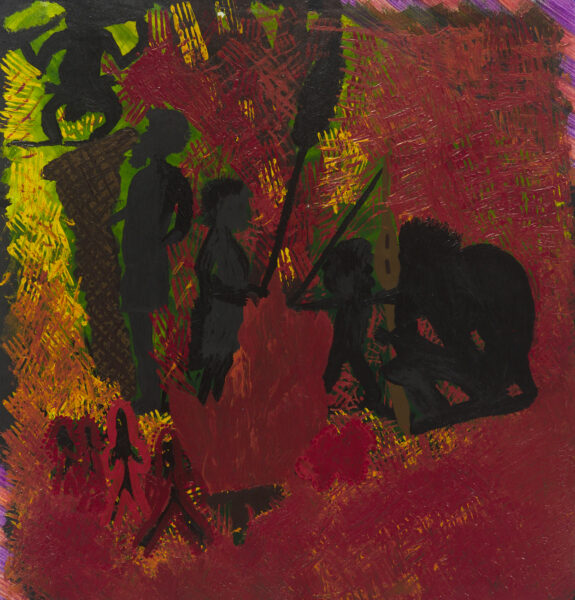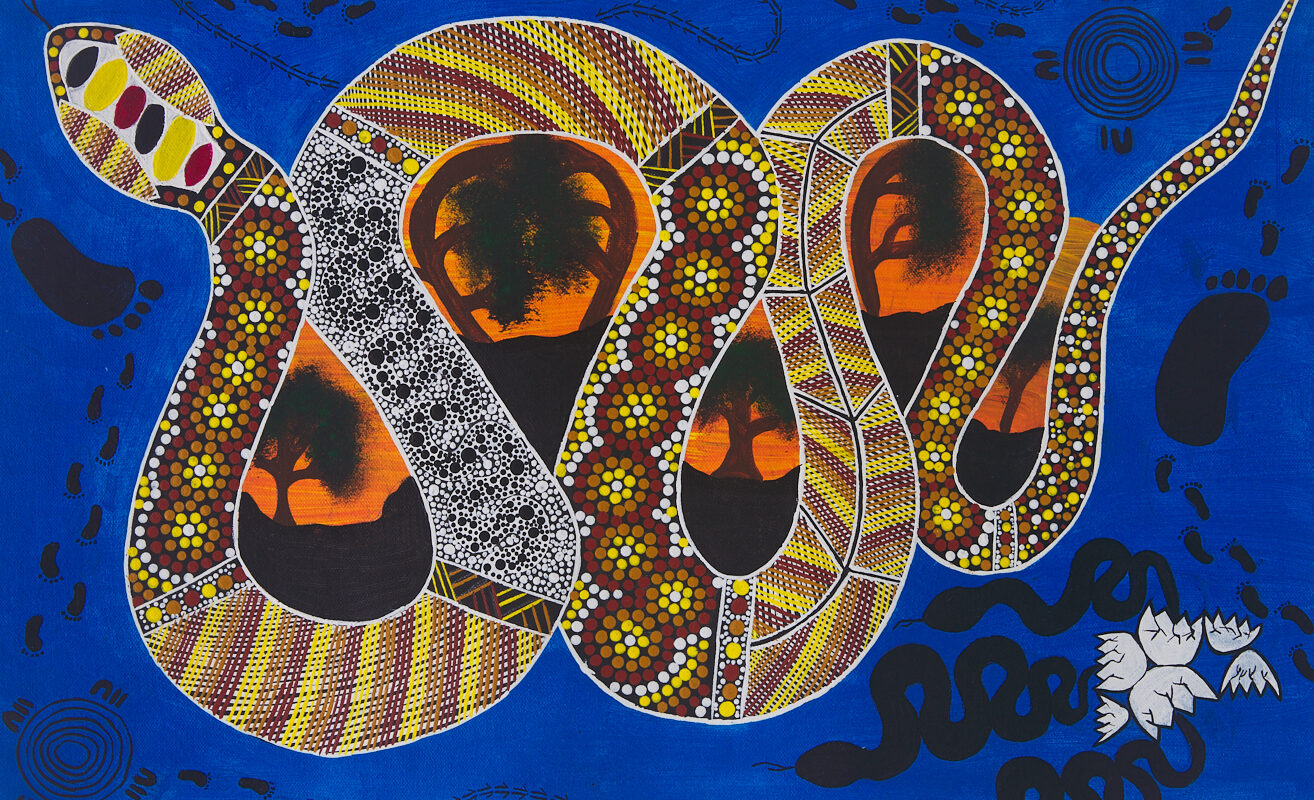
Many, if not most, of the Gunditjmara identifying artists in The Torch program pay direct homage to family, past and present, in their artwork.
The tightly interwoven bonds that form within the cultural and geographic boundaries of Language Groups and Clans are at the core of First Nations society and culture. The impressive and comprehensive Gunditjmara Family Clan Map compiled by the Winda-mara Aboriginal Corporation is a testament to this.
R. Haines’ Mother’s Footsteps (pictured above) depicts the first steps an infant takes in their family and on Country, ‘we learn to follow our mother’s footsteps to survive the outside world,’ he says. ‘As we get older, we learn to meet with new people’.
Beau C’s Fathers of the Deep explores the hardships of the incarcerated father. ‘Seahorses are a rarity in the animal kingdom in that the fathers are responsible for carrying the babies,’ he shares. ‘Metaphorically, it represents the anguish for many fathers in prison who have not forgotten their responsibilities, obligations and love for their children, wherever in the ocean or world they might be’.
From the spectre of our Ancestors ‘watching over us from the stars’ as B. Joyce describes in their work Ancestors, to the personale tribute of B. G. Nikkelson’s Looking Over Family, which honours his relative Uncle Jack Charles ‘looking over my family,’ these works speak to the enduring bonds that connect us. This thread – Ancestral to contemporary – can be seen in Reconnecting by Aaron L, which depicts ‘two brothers reconnecting, having been split from birth’.
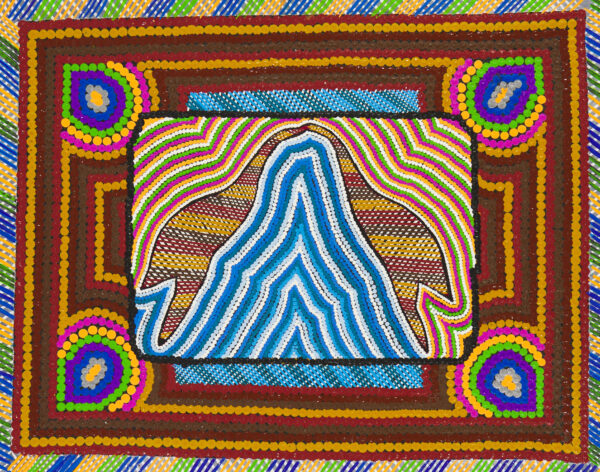
Bonds within and outside the prison walls are further explored in A. Heffernan’s painting My Spirit Being in Touch With Mob and Family. States the artist, ‘I found family whilst I was incarcerated in prison. I’ve connected to culture and am finding out more about my Mob and art. Proud Gunditjmara man.’
Melissa Bell’s (Gunditjmara/Yorta Yorta) work Women and Children on the Murray also depicts family and community connections, but of ‘Women coming together telling yarns’, she says. ‘All the children playing together on the Murray River.’
The role of women and mothers as the grounding core of family ties is too, portrayed in the deeply moving work My Children by TES (Gunditjmara/Barngarla). ‘This tells the story of my journey, of the babies I was pregnant with that did not make it to be born,’ TES shares. ‘I have two girls, living, that are 14 and 9 years of age; and I have friends with children who call me Aunty Tessa. They love coming to see their Aunty Tessa. I take them shopping, go camping and fishing and teach them art and crafts. They love their Aunty Tessa.’
The need to remain connected, or to re-connect, with family, whether living in the present or deep in the past, relays the importance of that bond – between parents, children, aunts, uncles, grandparents and Ancestors – as increasingly integral to these artists sense of self, their culture, and their own place in society.
